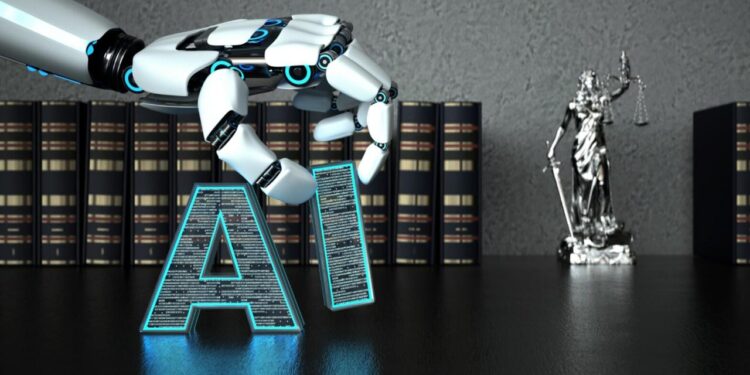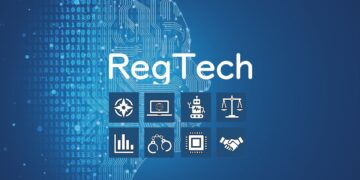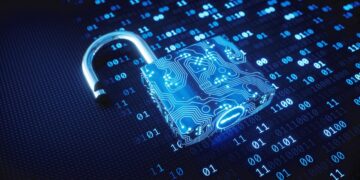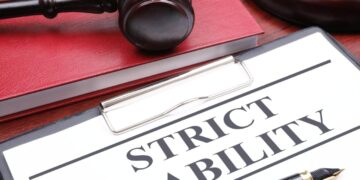The rapid advancement of artificial intelligence (AI) has sparked a new frontier of legal and ethical challenges, none more contentious than those surrounding Intellectual Property (IP) AI Battles. As AI systems become capable of generating original and complex creative works, from music and art to code and literature, they are challenging the very foundations of IP law. This article will provide a deep dive into the legal, ethical, and economic complexities that arise when AI intersects with intellectual property. We’ll explore the key legal debates, from who owns AI-generated content to whether AI can be a legal inventor, and discuss the strategic implications for creators, corporations, and the global legal system. The AI revolution is not just changing how we create; it’s forcing us to redefine what creativity and ownership mean in a new, automated era.
The Fundamental Question

At the heart of the intellectual property debate is a foundational principle: for a work to be protected by copyright or a patent, it must be created by a human. AI systems, by their nature, challenge this long-held assumption, forcing legal scholars and policymakers to reconsider the very definition of a “creator.”
A. Copyright and Human Authorship: Copyright law is a legal framework designed to protect the original works of human authors. The key word here is “human.”
- The “Author” Dilemma: When an AI system, like Midjourney or ChatGPT, generates a piece of art or a short story, who is the author? Is it the person who wrote the prompt (the “prompter”)? Is it the developer who created and trained the AI? Or is it the AI itself?
- U.S. Copyright Office Rulings: The U.S. Copyright Office has been clear on this matter, stating that works generated entirely by AI cannot be copyrighted. They have, however, granted copyright for works where there is a “sufficiently creative human contribution.” This distinction is a gray area that will be the subject of a great deal of legal debate and litigation. The legal fight is over where to draw the line between a human using a tool and a machine autonomously creating a work.
B. Patents and Natural Persons: Patent law, which protects inventions, faces a similar challenge. The law explicitly requires an “inventor” to be a “natural person.”
- The DABUS Case: The DABUS case, where an AI was named as the inventor on a patent application, brought this issue to a head in courts around the world. While most courts have ruled against granting the AI inventor status, the case highlighted the inadequacy of existing law. It forced a conversation about whether to amend patent law to allow for non-human inventors or to create a new framework entirely.
- AI as a Tool vs. AI as an Inventor: A more common scenario is a human inventor using an AI system to accelerate the invention process. In these cases, the human inventor is typically granted the patent. However, as AI’s role becomes more significant—for example, if the AI makes an unexpected and non-obvious leap in the invention process—the legal system will have to grapple with how to properly credit its contribution.
C. The Global Perspective on AI Authorship: The U.S. stance is not universal. Some countries, like the United Kingdom and New Zealand, have a legal concept of “computer-generated works” that can be protected by copyright. This patchwork of global laws creates a fragmented and challenging environment for creators and corporations that operate internationally.
The New Battleground
AI models, particularly large language and image models, are trained on vast datasets of existing creative works scraped from the internet. This process has become a major source of legal and ethical contention.
A. Copyright Infringement in Training Data: A key question is whether the act of using copyrighted works to train an AI model constitutes copyright infringement.
- The “Fair Use” Doctrine: In the U.S., the legal defense of “fair use” is at the center of this debate. Fair use allows for the limited use of copyrighted material without permission for purposes such as criticism, commentary, news reporting, teaching, scholarship, and research.
- The “Transformative” Argument: AI developers argue that the training process is “transformative.” They claim that the AI is not simply making a copy of the original work but is learning from it to create something entirely new, which is a key factor in fair use analysis.
- Creator’s Rights: Creators, on the other hand, argue that they are being robbed of their compensation and that their work is being used without permission to build a competing product. The outcome of these legal battles will have a profound impact on the future of AI development.
B. The Ethics of Compensation: Beyond the legal question, there is an ethical one: should creators be compensated for the use of their work in training AI models?
- The “Opt-Out” Problem: The current system is largely an “opt-out” model, where a creator must actively take steps to remove their work from a training dataset. This places a heavy burden on individual artists and writers.
- The “Opt-In” Solution: Many creators are advocating for an “opt-in” model, where AI companies would have to get explicit permission to use a work and would be required to compensate the creator. This would create a more equitable and ethical system for AI development.
C. The Future of Licensing and Agreements: The legal system is already seeing the development of new licensing agreements. Some companies are creating new frameworks that allow creators to license their work specifically for AI training, and some AI platforms are exploring revenue-sharing models with creators whose work was used in their training data.
The New Legal Liabilities and Risks
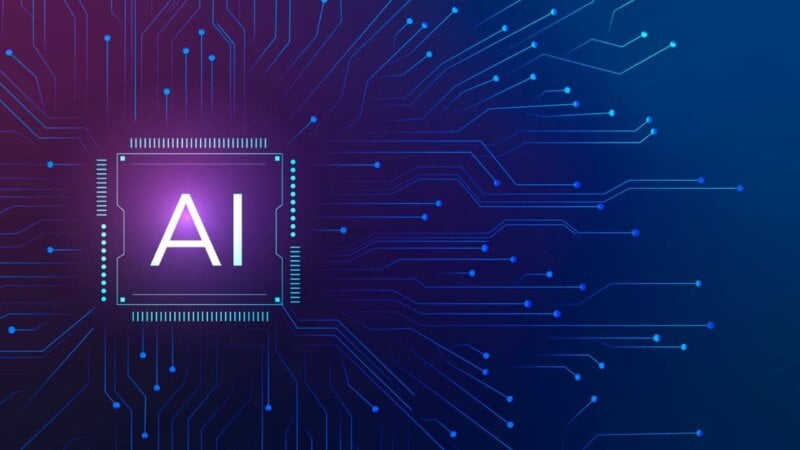
The rise of AI-generated content also introduces new forms of legal liability for companies and creators.
A. Defamation and Misinformation: AI systems can be used to generate realistic but false content, from fake news articles to “deepfake” videos.
- Platform Liability: This raises the question of Social Media Legal Liability and whether the platforms that host this content can be held responsible.
- The “Actual Malice” Standard: The legal system is still grappling with how to apply the “actual malice” standard—a key part of defamation law—to AI-generated content. If a human creates a deepfake of a public figure, it is a clear case of defamation. But what if a user prompts an AI to create a piece of misinformation that then goes viral? Who is liable?
B. Algorithmic Bias and Discrimination: AI models are often trained on biased data, which can lead to discriminatory outcomes in the content they generate. For example, an AI that is trained on a biased dataset might generate content that is prejudiced against a certain race or gender.
- Legal Responsibility: The legal system will have to determine who is responsible for this bias. Is it the company that created the model, the user who prompted it, or the original creators of the biased dataset? The legal fight is over how to establish accountability and recourse for victims of algorithmic bias.
C. Brand and Trademark Infringement: AI systems can be prompted to create new logos, advertisements, or products that infringe on an existing brand’s trademark.
- The “Likelihood of Confusion” Standard: The legal system will have to apply the “likelihood of confusion” standard—a key part of trademark law—to these AI-generated works. The legal challenge will be to determine whether a reasonable consumer would be confused by the AI’s output.
- Protecting Your Brand: Companies are already taking steps to protect their brands, with some registering their trademarks in a way that includes AI-generated works.
The Future of New Frameworks and Global Harmonization
The current legal framework is simply not equipped to handle the complexities of AI and intellectual property. The future will require a new, comprehensive approach.
A. New Legislative Frameworks: The current patchwork of laws is creating legal uncertainty and stifling innovation. There is a growing consensus that new, tailored legislation is needed.
- New Categories of Ownership: This could involve creating new categories of intellectual property, such as a “machine-generated work,” with a new set of rules for ownership and compensation.
- Licensing for AI: New laws could also mandate new licensing agreements that require AI companies to compensate creators for the use of their work.
B. International Legal Harmonization: The global nature of AI development and distribution makes international legal harmonization a necessity.
- A Global AI Copyright Treaty: The future could see a global treaty that sets a universal standard for AI-generated works, similar to the treaties that govern traditional intellectual property. This would provide clarity and consistency for creators and companies that operate across borders.
- Collaboration: The development of this new legal framework will require unprecedented collaboration between legal scholars, technologists, artists, and policymakers from around the world.
C. The Evolving Role of Lawyers: The legal profession itself is being transformed by AI. Lawyers will need to become experts in AI law, understanding the technology, the ethics, and the legal frameworks that govern it. AI tools will also be used to streamline legal research and contract review, allowing lawyers to focus on the complex, nuanced legal battles of the future.
Conclusion
The intellectual property battles of the AI era are not just about who owns a piece of art or a patent; they are about who we are as creators and what we value as a society. The AI revolution is forcing us to confront the very definitions of creativity, authorship, and ownership. The challenges are immense, from the legal ambiguity of AI-generated works to the ethical questions of fair compensation for creators. However, the opportunity is even greater: to create a new legal framework that is as innovative, flexible, and forward-looking as the technology it seeks to govern. The decisions we make today will not only shape the future of AI but will also define our relationship with creativity, technology, and the law for generations to come. The future of IP is here, and it is a fascinating and challenging new frontier.

